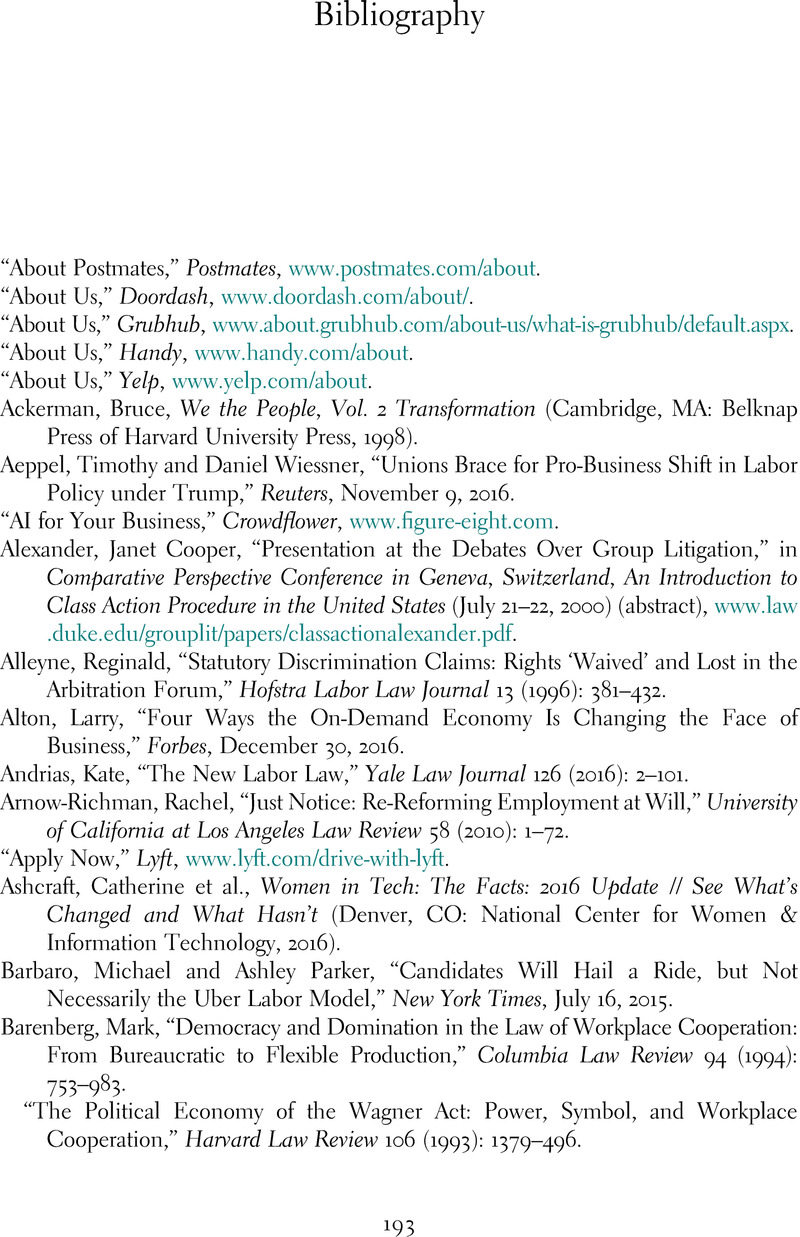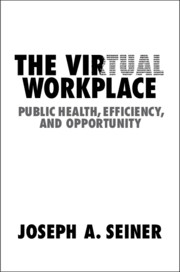Book contents
- The Virtual Workplace
- The Virtual Workplace
- Copyright page
- Dedication
- Contents
- Preface
- Acknowledgments
- 1 Introduction
- 2 Who Is an Employee?
- 3 Pleading Standards and the Technology Sector
- 4 Aggregating Claims
- 5 Collective Bargaining Agreements and Unions in the Modern Economy
- 6 Harassment and the Virtual Workplace
- 7 A Few Final Thoughts
- Appendix Selected Portions of Plaintiff’s Complaint in Bradshaw v. Uber Technologies
- Bibliography
- Index
- References
Bibliography
Published online by Cambridge University Press: 08 June 2021
- The Virtual Workplace
- The Virtual Workplace
- Copyright page
- Dedication
- Contents
- Preface
- Acknowledgments
- 1 Introduction
- 2 Who Is an Employee?
- 3 Pleading Standards and the Technology Sector
- 4 Aggregating Claims
- 5 Collective Bargaining Agreements and Unions in the Modern Economy
- 6 Harassment and the Virtual Workplace
- 7 A Few Final Thoughts
- Appendix Selected Portions of Plaintiff’s Complaint in Bradshaw v. Uber Technologies
- Bibliography
- Index
- References
Summary

- Type
- Chapter
- Information
- The Virtual WorkplacePublic Health, Efficiency, and Opportunity, pp. 193 - 218Publisher: Cambridge University PressPrint publication year: 2021



